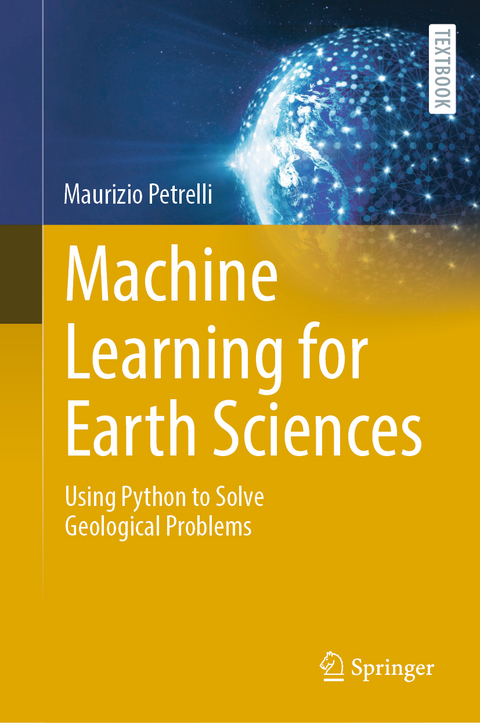
Machine Learning for Earth Sciences
Springer International Publishing (Verlag)
978-3-031-35113-6 (ISBN)
This textbook introduces the reader to Machine Learning (ML) applications in Earth Sciences. In detail, it starts by describing the basics of machine learning and its potentials in Earth Sciences to solve geological problems. It describes the main Python tools devoted to ML, the typical workflow of ML applications in Earth Sciences, and proceeds with reporting how ML algorithms work. The book provides many examples of ML application to Earth Sciences problems in many fields, such as the clustering and dimensionality reduction in petro-volcanological studies, the clustering of multi-spectral data, well-log data facies classification, and machine learning regression in petrology. Also, the book introduces the basics of parallel computing and how to scale ML models in the cloud. The book is devoted to Earth Scientists, at any level, from students to academics and professionals.
lt;p>Maurizio Petrelli is an associate professor in petrology and volcanology at the Department of Physics and Geology, University of Perugia. In 2001, he graduated in Geology and obtained his Ph.D. in February 2006 at the University of Perugia. His current studies are focused on the petrological, volcanological, and geochemical characterization of magmatic systems with particular emphasis on time-scales estimates of magmatic processes. He combines the use of numerical simulations, experimental petrology, and the study of natural samples. Since 2016, he has developed a new line of research at the Department of Physics and Geology (University of Perugia) focused on the application of Machine Learning techniques to petrological and volcanological studies.
Part 1: Basic Concepts of Machine Learning for Earth Scientists.- Chapter 1. Introduction to Machine Learning.- Chapter 2. Setting Up your Python Environments for Machine Learning.- Chapter 3. Machine Learning Workflow.- Part 2: Unsupervised Learning.- Chapter 4. Unsupervised Machine Learning Methods.- Chapter 5. Clustering and Dimensionality Reduction in Petrology.- Chapter 6. Clustering of Multi-Spectral Data.- Part 3: Supervised Learning.- Chapter 7. Supervised Machine Learning Methods.- Chapter 8. Classification of Well Log Data Facies by Machine Learning.- Chapter 9. Machine Learning Regression in Petrology.- Part 4: Scaling Machine Learning Models.- Chapter 10. Parallel Computing and Scaling with Dask.- Chapter 11. Scale Your Models in the Cloud.- Part 5: Next Step: Deep Learning.- Chapter 12. Introduction to Deep Learning.
"This book is essential for anyone planning to apply machine learning to earth science data (including multispectral and hyperspectral imaging). For maximum benefit, the reader should treat it as both an extensive tutorial as well as a bibliography: be prepared to code along with the examples and to look up the references." (Creed Jones, Computing Reviews, January 1, 2024)
“This book is essential for anyone planning to apply machine learning to earth science data (including multispectral and hyperspectral imaging). For maximum benefit, the reader should treat it as both an extensive tutorial as well as a bibliography: be prepared to code along with the examples and to look up the references.” (Creed Jones, Computing Reviews, January 1, 2024)
| Erscheinungsdatum | 24.09.2023 |
|---|---|
| Reihe/Serie | Springer Textbooks in Earth Sciences, Geography and Environment |
| Zusatzinfo | XVI, 209 p. 102 illus., 99 illus. in color. |
| Verlagsort | Cham |
| Sprache | englisch |
| Maße | 155 x 235 mm |
| Gewicht | 499 g |
| Themenwelt | Naturwissenschaften ► Geowissenschaften ► Geologie |
| Schlagworte | Application of Machine Learning • Deep learning • ML Tools in Python for Geologists • Python Tools and Techniques • tree-based models |
| ISBN-10 | 3-031-35113-4 / 3031351134 |
| ISBN-13 | 978-3-031-35113-6 / 9783031351136 |
| Zustand | Neuware |
| Haben Sie eine Frage zum Produkt? |
aus dem Bereich


